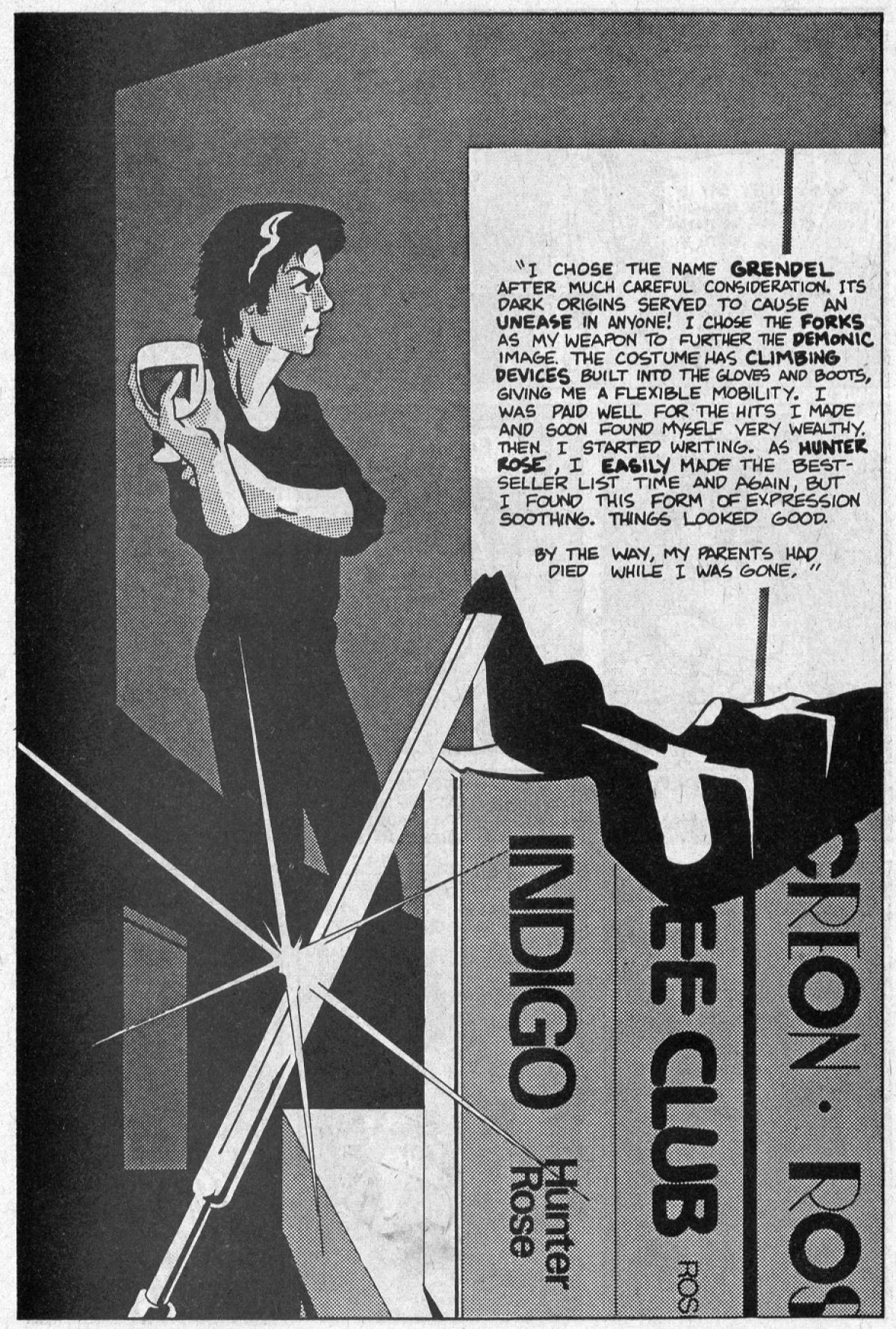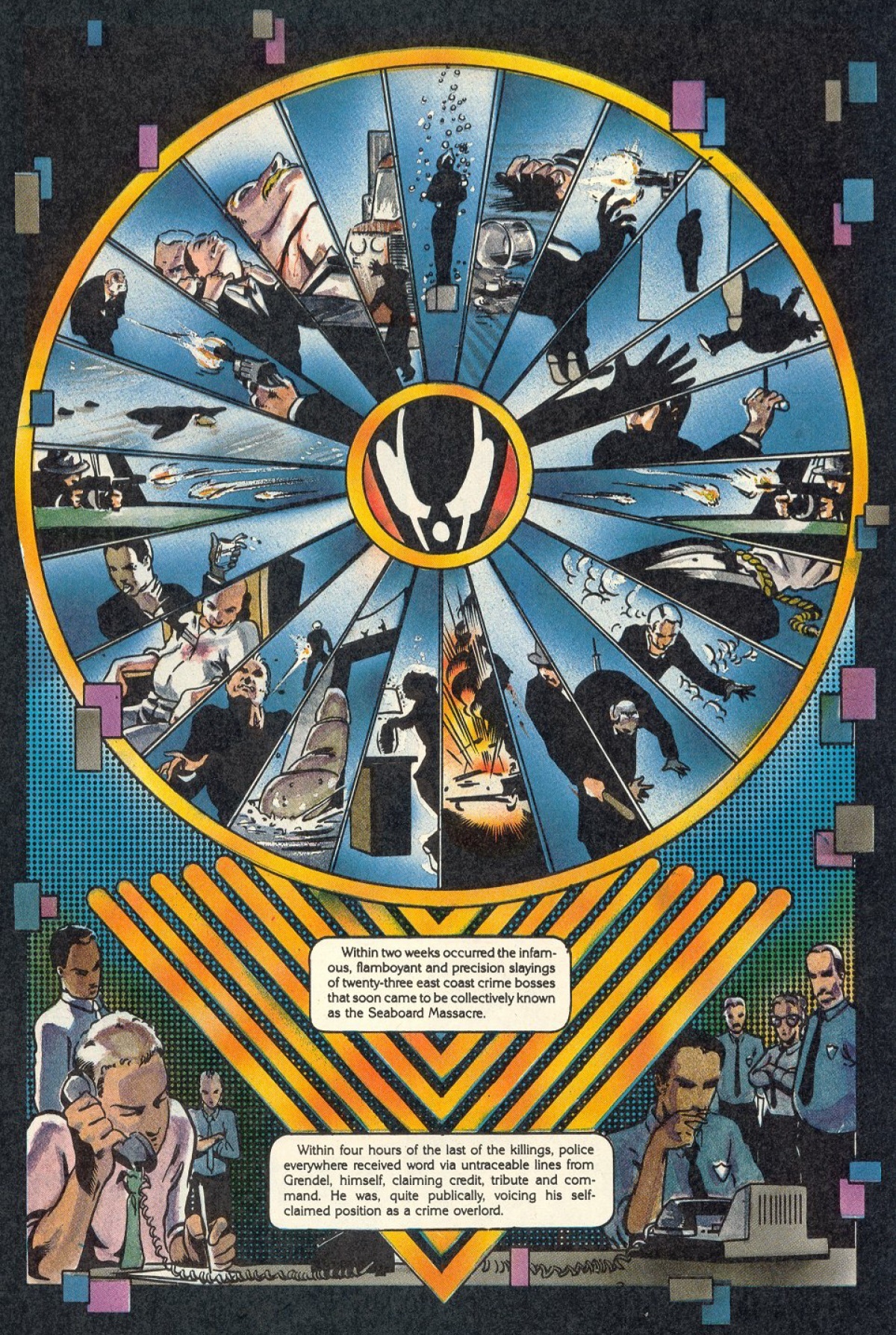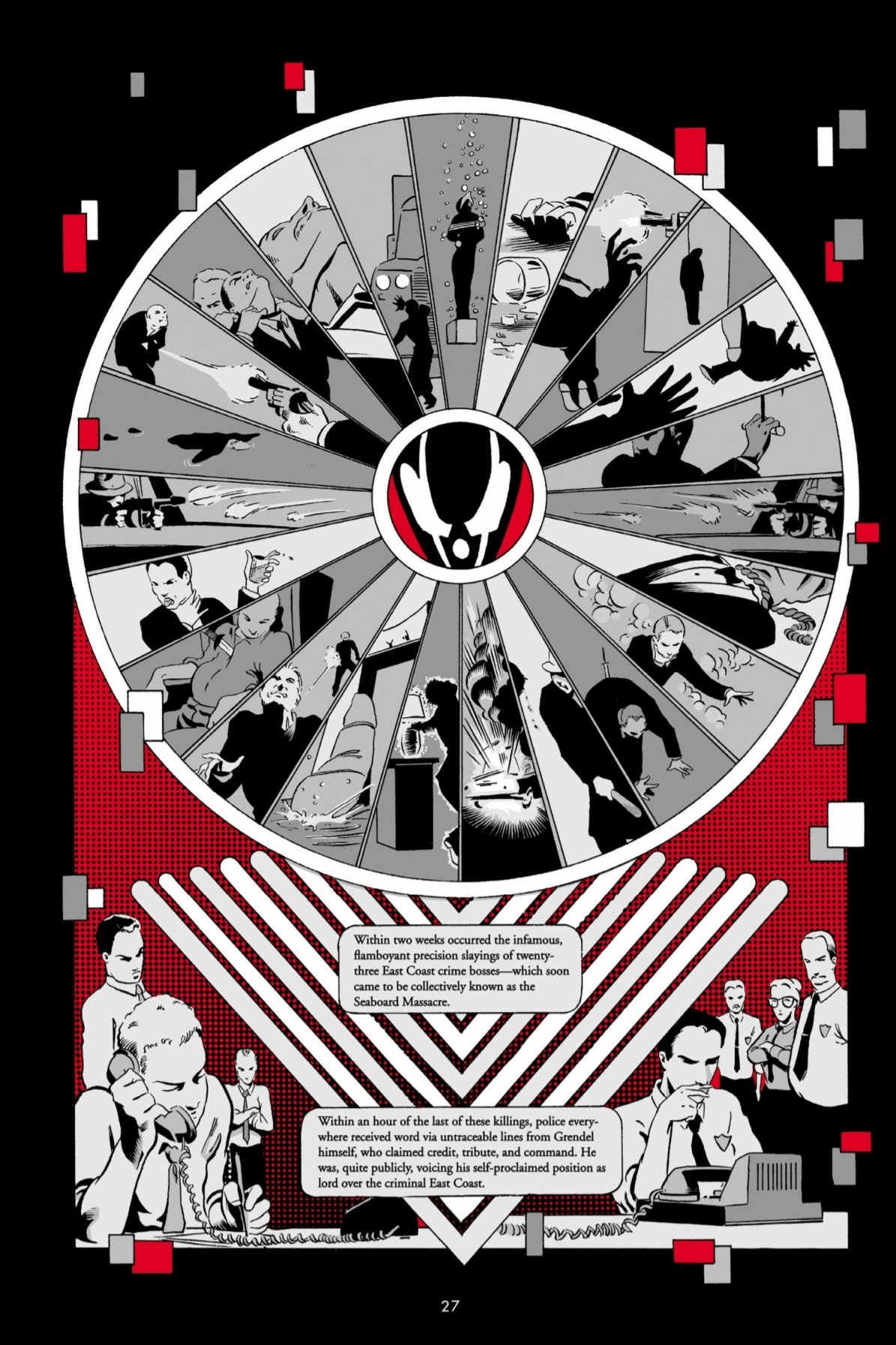This week sees the publication of a re-telling of one of the oldest continuing stories in independent comics, Grendel - Devil By the Deed: Master’s Edition.
Available as a $30 hardcover, a $125 signed limited edition, and a sold out edition limited to just 12 copies containing original artwork.
https://www.darkhorse.com/Books/3010-670/Grendel-Devil-by-the-Deed-Masters-Edition-HC
This new edition isn’t just a reprint, it’s a complete re-telling of the original Hunter Rose Grendel story and was timed to come out with the now scuttled Netflix project.
It’s also the 3rd version of this story.
But how did we get here?
Back in the 1980’s, after the Comics Code Authority was being safely ignored by selling directly to independent comic shops, we saw a bunch of new publishers pop up on the scene, Pacific Comics, Eclipse, First, Mirage, Blackthorne, and (much later) Dark Horse. Image would follow a full decade later.
One of the tiny publishers was Comico and they got their start promoting their new line of comics by publishing an anthology book called “Comico Primer” (aha! You see what I did there!)
Comico Primer had snippets of what was to come from the publisher, and most of it was, largely forgettable. But in 1982, Comico Primer #2 introduced the world to Grendel by Matt Wagner.
His style at the time was pretty rough, the dialog was awful, and the storytelling of a mythical rooftop battle, flashing back to a murder mystery, could have been better.
It was followed by Grendel #1, 2, and 3, leaving the story unfinished and the mystery of who murdered Barry Palumbo unsolved.
But the art had a distinct style, one that would carry on, and develop greatly over the next 40 years.


As a publisher, though the initial work was a little rough, Comico managed to make a name for itself and Wagner published his second original work, this time in color, starting in 1984.
That book, Mage, ended up with a pretty successful 15 issue run that is still being collected to this day. Where it overlaps with Grendel though is that starting with issue #6, the character of Hunter Rose, and the story of his origin, and the murder mystery of Barry Palumbo would get the first MASSIVE re-working.
Told just four pages at a time, in gorgeous watercolor-style airbrushed artwork, the Grendel backup ran from Mage #6 to it’s conclusion in #14.



The full story would then be compiled as Comico’s first graphic novel, the magazine sized “Devil by the Deed”. Which, other than the oversized format and the removal of notes like “To be continued…” was an utterly faithful compilation of the original work under a single cover.

However the 1980s being the 1980s, and independent publishing being independent publishing, Comico eventually reached a point where it just couldn’t survive any longer and it folded in 1990, despite Grendel having a very successful 40 issue run there. :(
https://en.m.wikipedia.org/wiki/Comico:_The_Comic_Company
The copyright issues were a nightmare and by the time Wagner extricated his properties and got them to Dark Horse it would be 1992, a full decade after the book began.
The new books were a success at Dark Horse, and they sought to bring the original stories back into print. Unfortunately, something had happened to the original color artwork and many books simply could not be reproduced at all.
So, in 1993, Dark Horse brought in one of Wagner’s original collaborators, Bernie Mireault, to come in and re-color Devil by the Deed in a more traditional comics color scheme.



Unable to access the original art, the new colors kind of sucked the life right out of the book. It went from highly colorful and almost three dimensional, to flat and boring.
But what could they have done? Unless you own the original Comico books, you’ll never again see the original colors, and any surviving copy of the story is better than none.
Dark Horse continued printing new Grendel stories along with reprints of the Comico run and eventually, the Hunter Rose stories became synonymous with a format called “Black, White, and Red”. Which is exactly what it sounds like. A black and white comic with red tones.
The origin of this goes back to a Grendel slip-case Comico published to co-incide with their first 12 issue run of Grendel by Wagner and the fantastic Pander Brothers.
https://www.worthpoint.com/worthopedia/comico-collection-grendel-slipcase-1819503818
You got the Grendel themed box, 10 random Comico back issues, and a 16 page comic done in black, white, and red called “Grendel: Devil’s Vagary”, exclusive to the slipcase.
After the Black, White, and Red series took off, Dark Horse re-colored Devil by the Deed AGAIN to match, and that’s the version which currently gets re-printed in the big Omnibus editions.



The new Master’s Edition features entirely all new artwork, over 100 added pages, and the Black, White, and Red color scheme. I was able to see a copy a few days ago and I’m always down for some new Matt Wagner stuff.
https://www.darkhorsedirect.com/products/grendel-devil-by-the-deed-masters-edition

As you can see, the new art is dynamic and dimensional in ways the re-colored art could never be.
Next to the original Comico run, this looks to be the definitive edition of Devil by the Deed.


I deeply love the story of Grendel. He’s left an invisible imprint on me since I was a young boy fishing issues from my father’s oversized trunk that squatted tempestuously in our living room. Thank you for this summary! I learned a few things I hadn’t known.
For those who grew up with Grendel and now work in tech, like me, I did a talk on mindfulness and conflict in the workplace using the leitmotif of Grendel. Matt Wagner was kind enough to allow me to use his art for the talk.
Pretty deep reading for a kid, but then I would have been 13, 14, 15 as these books were coming out so who am I to judge? ;)